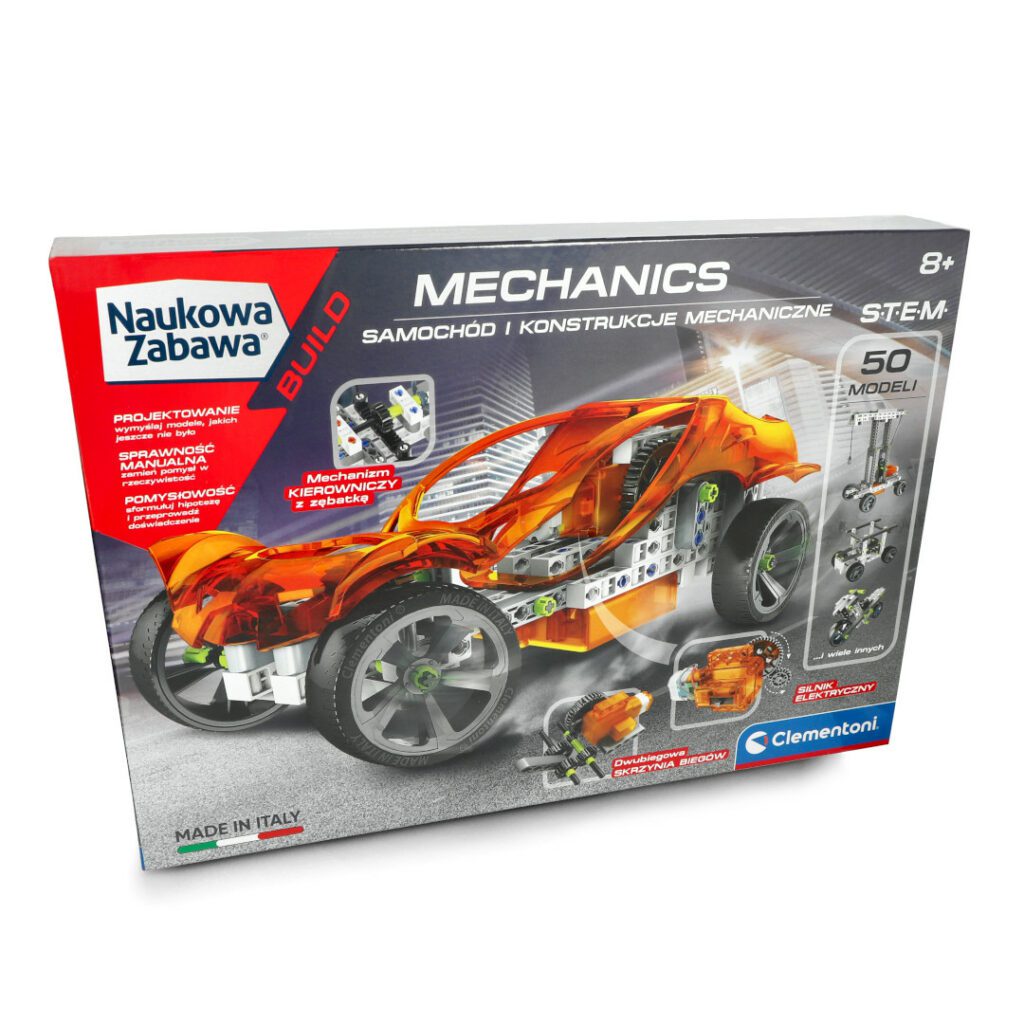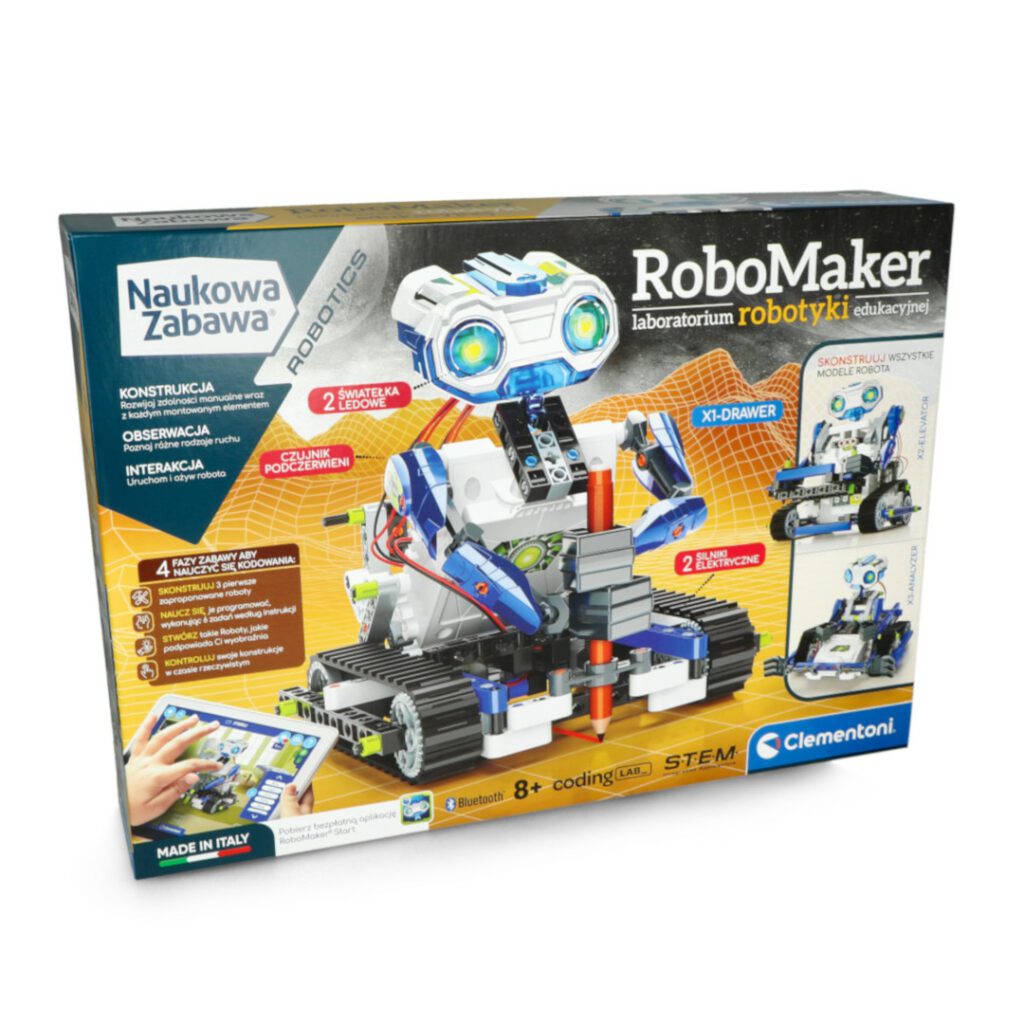Table of Contents:
Clementoni is an Italian company with tradition. It has specialized in the production of toys, educational games and puzzles since it was founded in 1963 by Mario Clementoni and has consistently remained among the world’s leading manufacturers of educational toys. The world of educational robotics, which was created in response to the growing demand for technology, programming, engineering and problem-solving skills, allowed Clementoni to enter the field of developing creative and user-friendly educational robots. The range continues to grow and we should actually say: robots Clementoni.
Educational robotics and computer technology development
Origins
of educational robotics
can be traced back to the development of personal computers in the 1970s. Parents’ concerns about educational robots, however, are still alive. Why is this so, when satisfied users of these devices, who at least have already learned the strengths of the STEM teaching concept, are accompanied by an equally strong trend of allaying these fears – and they are the ones who contribute most to the popularity of robots away from manufacturing halls or construction sites?
Concerns about robots obviously vary depending on context and culture. In general, it can be said that these fears are permeating into educational robotics centered around the needs of the youngest and more projections are being made. Those concerned about the impact of robots on the future and stability of employment, personal safety or ethical issues related to their use are more than likely to more or less consciously translate this set of insights into educational robots.
Concerns are even stronger on the aforementioned security issues. If robots will be perceived as, for example, at least partially understandable at the mechanical level, but at the same time appearing as a great enigma at the software level, and on top of that, in times of privacy threats, it will not be clear what data they collect and what happens to it afterwards, and finally – if the same concerns are transferred to the world of robotics for children, it is hardly surprising to see reluctance.
In the case of advanced AI robots, there is a comment about taking autonomous actions. Issues such as morality, responsibility for the robots’ actions and control over their decisions are important ethical issues, the very way in which they are addressed particularly affects children. The oil is added to the fire by popular culture when it once again portrays robots as potentially dangerous, which reinforces fears in society and we are shown scenarios in which robots revolt against humanity.
Programming and robots for children - is it safe?
There are many concerns behind the fact that the terms “programming” and “coding” are somehow enchanted. There are quite sorcerous visions operating around them, and visions as visions are – they are the ones that take us away from reality, not fun and learning with a robot. Programming and coding evoke associations with spending long hours in front of a screen, and from there it’s not far to another vision in which the unfortunate lose themselves in the virtual world. Robot programming for kids is actually a special type of coding learning that is tailored to youngsters and aims to teach the basic concepts of giving commands to robots in an interactive and friendly way. Of course, it differs from “the one for adults” in many ways. The specialists at Clementoni are committed to making the operation intuitive and in line with what we know about children’s cognitive processes and motor skills.
The programming languages used are often graphical tools that are as easy to understand as a picture of a house, a bird or a dog. Programming for children often uses gamification, or elements of play and competition in the problem-solving process. A robot performing tasks in the form of colorful games makes the process more attractive, and everything that goes towards the reward of solving a problem requires imagination and perseverance. Schools introduce children to basic programming concepts from the early grades to help them develop technology-related skills, and manufacturers of children’s programming toys and tools realize the importance of moderate use of screens, the need to encourage children’s physical activity and creative exploration of the world.
Clementoni family of robots
Clementoni is able to appeal to beginners as well as proficient builders and programmers. Both building instructions and programming lessons start at the basic level. Those slightly more proficient in coding can move directly to writing more complex programs. At all levels, meanwhile, they learn about blocks of code and assemble a working robot somewhat like playing with LEGO.
Regardless of the Clementoni robot model, children receive a kit with parts to assemble, which include electronic components, motors, sensors or wheels. The assembly allows you to understand the basics of robot construction and familiarizes you with the various components. Once the robot is assembled, children often connect it to a computer or mobile device, such as one with Bluetooth. Communication with the program or mobile application begins. After learning the basics of programming, little engineers are encouraged to experiment with different code sequences to see how their changes affect the robot’s behavior.
This essentially experimental part of the process helps children understand cause-and-effect relationships and develop logical thinking skills. For a good start, we leave you with the ones you’ll find in Botland next to the Clementoni construction sets:
- Clementoni Robomaker Starter Kit
- Walking Bot – walking robot Clementoni
- Cyber Talk talking robot Clementoni
- All Clementoni educational robots
It’s worth taking a look and finding out!
How useful was this post?
Click on a star to rate it!
Average rating 0 / 5. Vote count: 0
No votes so far! Be the first to rate this post.





















